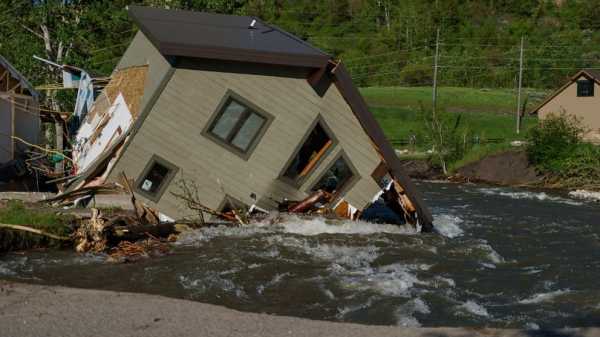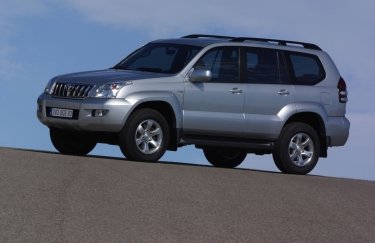
HELENA, Mont. — Whether a constitutional right to a healthy, livable climate is protected by state law is at the center of a lawsuit going to trial Monday in Montana, where 16 young plaintiffs and their attorneys hope to set an important legal precedent.
It's the first trial of its kind in the U.S., and legal scholars around the world are following its potential addition to the small number of rulings that have established a government duty to protect citizens from climate change.
The trial comes shortly after the state's Republican-dominated Legislature passed measures favoring the fossil fuel industry by stifling local government efforts to encourage renewable energy while increasing the cost to challenge oil, gas and coal projects in court.
By enlisting plaintiffs ranging in age from 5 to 22, the environmental firm bringing the lawsuit is trying to highlight how young people are harmed by climate change now and will be further affected in the future. Their testimony will detail how wildfire smoke, heat and drought have harmed residents' physical and mental health.
The plaintiffs' youth has little direct bearing on the legal issues, and experts say the case likely won't lead to immediate policy changes in fossil fuel-friendly Montana.
But over two weeks of testimony, attorneys for the plaintiffs plan to call out state officials for pursuing oil, gas and coal development in hopes of sending a powerful message to other states.
Plaintiff Grace Gibson-Snyder, 19, said she's felt the impacts of the heating planet acutely as wildfires regularly shroud her hometown of Missoula in dangerous smoke and as water levels drop in area rivers.
“We’ve seen repeatedly over the last few years what the Montana state Legislature is choosing,” Gibson-Snyder said. “They are choosing fossil fuel development. They are choosing corporations over the needs of their citizens.”
In high school, Gibson-Snyder was an environmental activist who was too young to vote when she signed on as a plaintiff. The other young plaintiffs include members of Native American tribes, a ranching family dependent on reliable water supplies and people with health conditions, such as asthma, that put them at increased risk during wildfires.
Some plaintiffs and experts will point to farmers whose margins have been squeezed by drought and extreme weather events like last year’s destructive floods in Yellowstone National Park as further evidence that residents have been denied the clean environment guaranteed under Montana’s Constitution.
Experts for the state are expected to downplay the impacts of climate change and what one of them described as Montana’s “miniscule” contributions to global greenhouse gas emissions.
Lawyers for Montana Attorney General Austin Knudsen, a Republican, tried repeatedly to get the case thrown out over procedural issues. In a June 6 ruling, the state Supreme Court rejected the latest attempt to dismiss it, saying justices were not inclined to intervene just days before the start of a trial that has been “literally years in the making.”
One reason the case may have made it so far in Montana, when dozens of similar cases elsewhere have been rejected, is the state's unusually protective 1972 Constitution, which requires officials to maintain a “clean and healthful environment.” Only a few other states, including Pennsylvania, Massachusetts and New York, have similar environmental protections in their constitutions.
In prior rulings, State District Judge Judge Kathy Seeley significantly narrowed the scope of the case. Even if the plaintiffs prevail, Seeley has said she would not order officials to formulate a new approach to address climate change.
Instead, the judge could issue what's called a "declaratory judgment” saying officials violated the state Constitution. That would set a new legal precedent of courts weighing in on cases typically left to the government's legislative and executive branches, environmental law expert Jim Huffman said.
Still, such a ruling would have no direct impact on industry, said Huffman, dean emeritus at Lewis & Clark Law School in Portland, Oregon.
“A declaratory judgment would be a symbolic victory, but would not require any particular action by the state government. So the state could, and likely would, proceed as before,” he said.
Economist Terry Anderson, a witness for the state, said that over the past two decades, carbon dioxide emissions from Montana have declined, but that's in part due to the shuttering of coal power plants.
“Montana energy or environmental policies have virtually no effect on global or local climate change because Montana’s GHG (greenhouse gas) contributions to the global total is trivial,” Anderson said in court documents.
He argued climate change could ultimately benefit Montana with longer growing seasons and the potential to produce more valuable crops.
Supporters of the lawsuit predicted an overflow crowd when the trial starts Monday in Helena. They rented a nearby theater to livestream the proceedings for those who can’t fit in the courtroom.
The case was brought in 2020 by attorneys for the environmental group Our Children’s Trust, which has filed climate lawsuits in every state on behalf of young plaintiffs since 2011. Most of those cases, including a previous one in Montana, were dismissed prior to trial.
A ruling in favor of the Montana plaintiffs could have ripple effects, according to Philip Gregory, Our Children’s Trust attorney. While it wouldn’t be binding outside Montana, it would give guidance to judges in other states, which could impact upcoming trials such as one in Hawaii, Gregory said.
Attempts to get a similar decision at the federal level were boosted by a June 1 ruling allowing a case brought by young climate activists in Oregon to proceed to trial in U.S. District Court. That case was halted by U.S. Supreme Court Justice John Roberts on the eve of the trial in 2018.
From 2011 through 2021, Our Children's Trust brought in contributions of more than $20 million, growing from four employees to a team of more than 40 attorneys and other workers and about 200 volunteers, according to tax filings and the group's website.
Founder Julia Olson said securing the trials in Montana and Oregon marked a “huge step” forward for the group.
“It will change the future of the planet if courts will start declaring the conduct of government unconstitutional,” she said.
While Montana's Constitution requires the state to “maintain and improve" a clean environment, the Montana Environmental Policy Act, originally passed in 1971 and amended several times since, requires state agencies to balance the environment with resource development.
Lawmakers revised the policy this year to say environmental reviews may not look at greenhouse gas emissions and climate impacts unless the federal government makes carbon dioxide a regulated pollutant.
A key question for the trial will be how forcefully the state contests established science on human-caused greenhouse gas emissions, said Jonathan Adler, environmental law professor at Case Western Reserve University in Cleveland. If the state doesn't deny that science, the trial will deal with the question of whether courts can tell governments to address climate change.
“I'm skeptical about that,” Adler said. “It really pushes the boundaries of what courts are capable of and effective at addressing.”
To Gibson-Snyder, now a student at Yale University in New Haven, Connecticut, the court system became the only avenue to make change as a 16-year-old.
Since then, "I’ve become maybe a bit disillusioned,” she said. “The question is not only can we create sustainable policy, it’s how can we dismantle the policy that’s actively harming Montana?”
___
Brown reported from Billings, Montana. Associated Press writer Drew Costley contributed from Washington, D.C.
Sourse: abcnews.go.com





